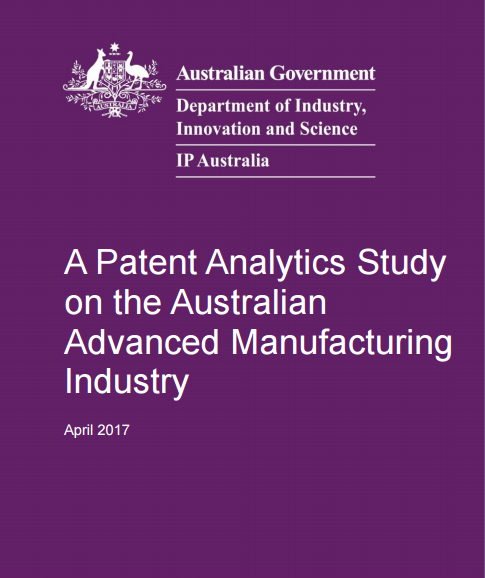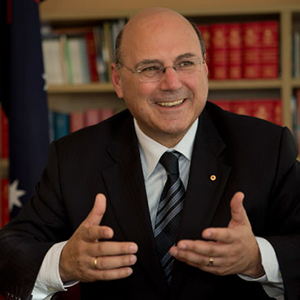Surprised? Australia is ‘patently’ good at manufacturing
IP AUSTRALIA’s latest report on patent activity has revealed Australia’s high global ranking in advanced manufacturing patent applications, commenting that it showed “healthy levels of innovation within the sector”.
The IP Australia report assessed patent activity to provide an insight into innovation in the advanced manufacturing sector, and benchmarked Australia against other nations. 
The majority of advanced manufacturing patents filed in Australia are in the ‘electrical technology’ category, a key driver for advanced manufacturing innovation.
The report found a 15 percent increase in advanced manufacturing patent applications between 2000 and 2013. This was largely driven by increases in patents for medical devices, up 46 percent, along with strong growth in chemical and mechanical engineering patents (33 percent and 29 percent respectively).
“Australia’s global position in advanced manufacturing patent applications is positive at 14th, outranking high performing countries such as Israel, Denmark, Austria and India,” Industry, Innovation and Science Minister Arthur Sinodinos said.
“This is significant given Australia is ranked 53rd in population.”
IP Australia also found that Australia ranked 10th out of 36 countries for specialisation in medical device patents and is middle-ranked globally for chemical engineering patents.
Australia also demonstrated innovative expertise in transport, mechanical engineering and pharmaceuticals, areas of significant growth and global opportunity.
IP Australia pointed out that ‘advanced manufacturing’ was more challenging to define than conventional manufacturing, “as it involves not only new ways to manufacture existing products and the manufacture of new products from emerging advanced technologies, but also it denotes the process by which knowledge-intensive value is added in both the pre- and post‑production phase including R&D and distribution”.
The report showed research organisations such as CSIRO, universities and medical research institutes were the major applicants overall, accounting for 10 of the top 15.
“They were also prominent in six of the eight technology sectors, having less of a focus on mechanical engineering and transport,” the report said. “Major corporate applicants included medical technology companies Cochlear and ResMed, along with BlueScope Steel and Rio Tinto. They accounted for 10 of the top 15 Australian advanced manufacturing applicants and were prominent in six technology sectors. Research institutions had the highest application numbers.”
Senator Sinodinos said, “Notably, Australia has a higher number of applications spread across the other technology categories than other countries, demonstrating the diversity of our advanced manufacturing sector compared to many other nations. 
“The Australian Government is supporting capability growth and fostering industry and research collaboration through initiatives like the Advanced Manufacturing Growth Centre (AMGC) and the Innovative Manufacturing Cooperative Research Centre.”
AMGC has established innovation hubs to develop and drive the development and uptake of new technologies, including in the key technological breakthrough areas of 3D printing, carbon fibre and what it calls Industry 4.0.
“With Australia adding over 10,000 additional manufacturing jobs in the last 12 months to February 2017 — along with the Ai Group’s Australian Performance of Manufacturing Index indicating solid expansion at 57.5 points in March 2017, the sixth consecutive month of expansion — there is cause for optimism on our manufacturing future,” Senator Sinodinos said.
“The Australian Government, through its National Innovation Science Agenda and other measures, remains committed to ensuring that our manufacturing industry is internationally competitive, with high levels of innovation to keep us ahead of the pack globally.”
The research also examined collaboration in Australia’s advanced manufacturing sector and highlighted the disturbing trend of low engagement with small-and-medium enterprises (SMEs). The study used multiple applicants for patents as a proxy for collaboration.
“The proportion of applications involving collaborations varies with applicant type,” the report said.
“Across the advanced manufacturing technologies overall, 20 percent of applications from Australian research institutions are collaborative efforts, followed by large Australian firms at 15 percent and international entities at 13 percent.
“This proportion drops to less than five percent when SMEs are involved. The results for individual technology sectors were similar; where research institutions collaborated most in seven of the eight technology sectors, while SMEs collaborated least across all sectors.”
The report is available at: www.industry.gov.au/A-patent-analytics-study-on-the-Australian-advanced-manufacturing-industry.pdf
ends

 How to resolve AdBlock issue?
How to resolve AdBlock issue?